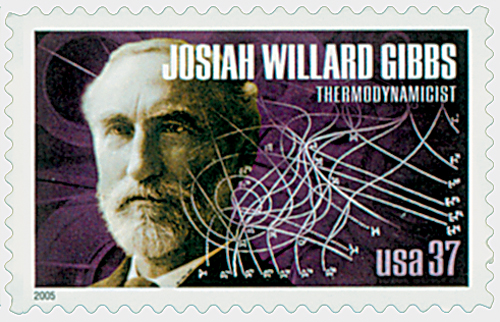
# 3907 - 2005 37c American Scientist: Josiah Willard Gibbs
37¢ Josiah Willard Gibbs
American Scientists
City: New Haven, CT
Printing Method: Lithographed
Color: Multicolored
Birth Of Josiah W. Gibbs
Gibbs’ father was a Yale professor who worked with the Africans of the Amistad Mutiny, translating their stories. Gibbs attended the Hopkins School before attending Yale College at the age of 15. While there he won prizes for excellence in mathematics and Latin. He graduated in 1858 near the top of his class.
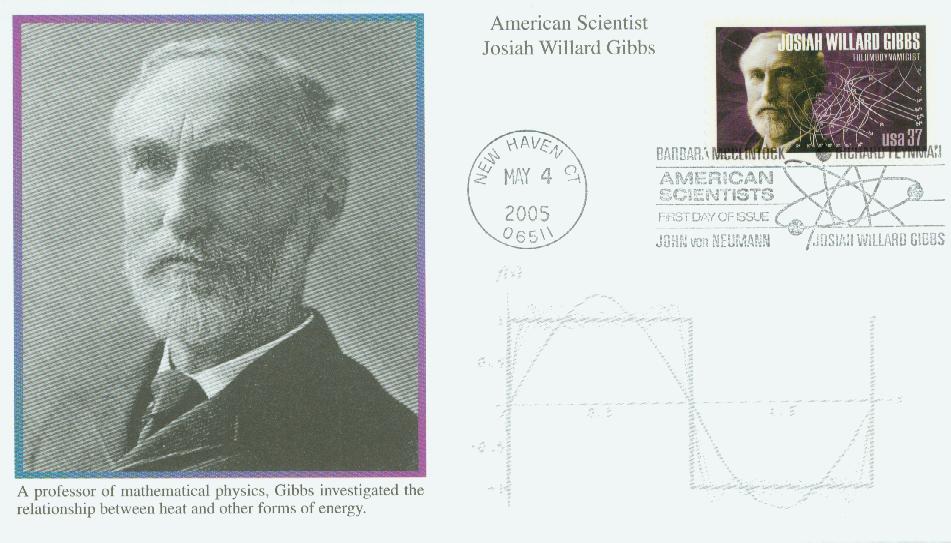
Gibbs remained at Yale as a graduate student, during which time he was inducted into the Connecticut Academy of Arts and Sciences. In 1863 he received the first Doctorate of Philosophy (PhD) in engineering granted in the US (and the fifth PhD grant in any subject in the US). He earned this for his thesis “On the Form of the Teeth of Wheels in Spur Gearing,” in which he used geometry to study the best design for gears.
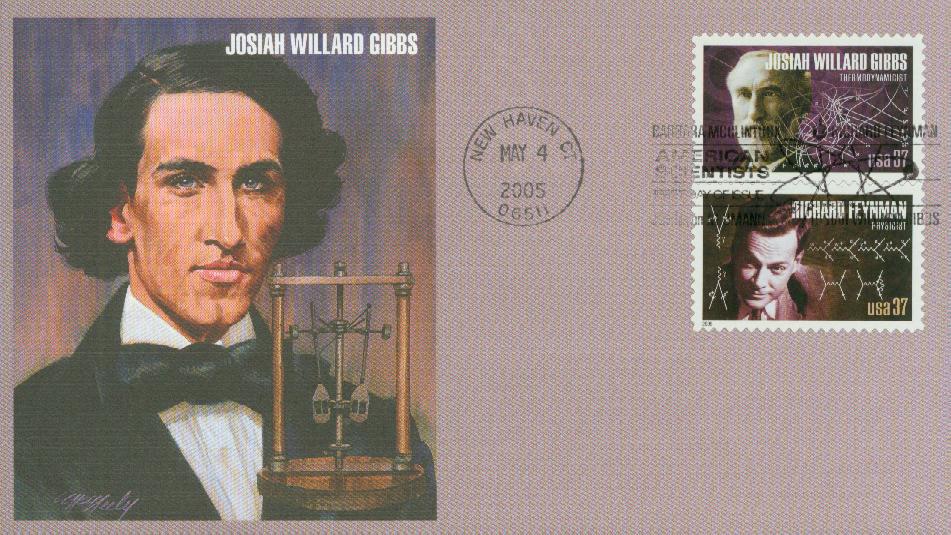
Gibbs went on to work as a tutor at Yale for three years, teaching Latin and later “natural philosophy” (physics). In 1866, he received a patent for his design of a railway brake. During this time he also proposed a new system of units of measurement in mechanics. Gibbs then spent a few years in Europe, attending lectures and meeting leading French and German scientists.
Gibbs returned to the US in 1869 and briefly taught French at Yale. Then in 1871, he was made the first professor of mathematical physics at Yale. For nine years he held that position with no pay, living on an inheritance. When another university offered a salary, Yale countered with its own offer. Gibbs stayed at Yale.
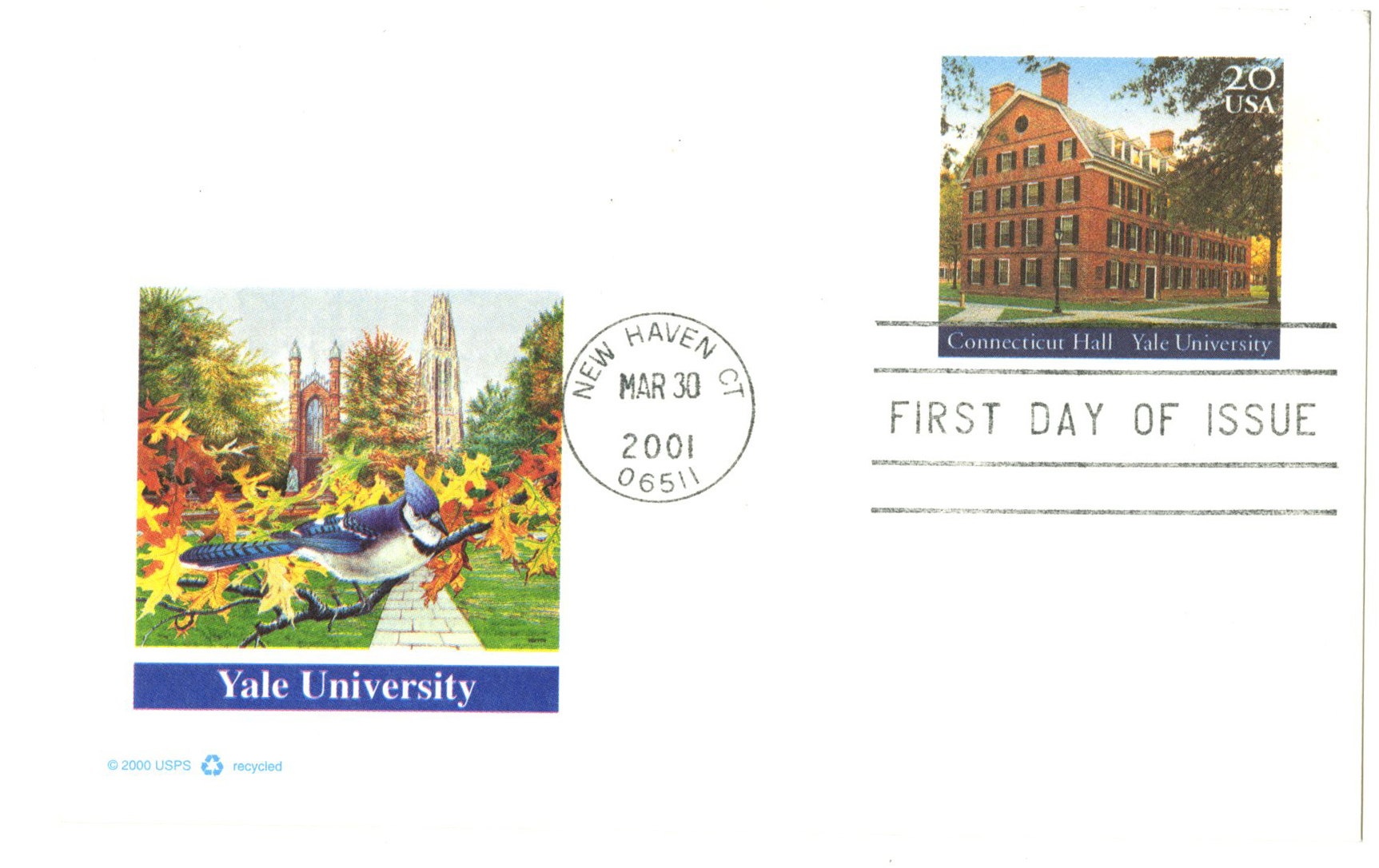
In 1873, Gibbs published his first paper, which was a geometric representation of thermodynamic qualities. In the age of steam, Gibbs formulated the laws of thermodynamics – the relationship between heat and other forms of energy. His rules had applications to chemistry, manufacturing, and engineering.
In the 1880s, Gibbs focused on vector calculus, particularly in regards to its use by physicists. He also wrote five papers on physical optics and coined the term statistical mechanics. Gibbs is credited with introducing the ideas of chemical potential and statistical ensemble.
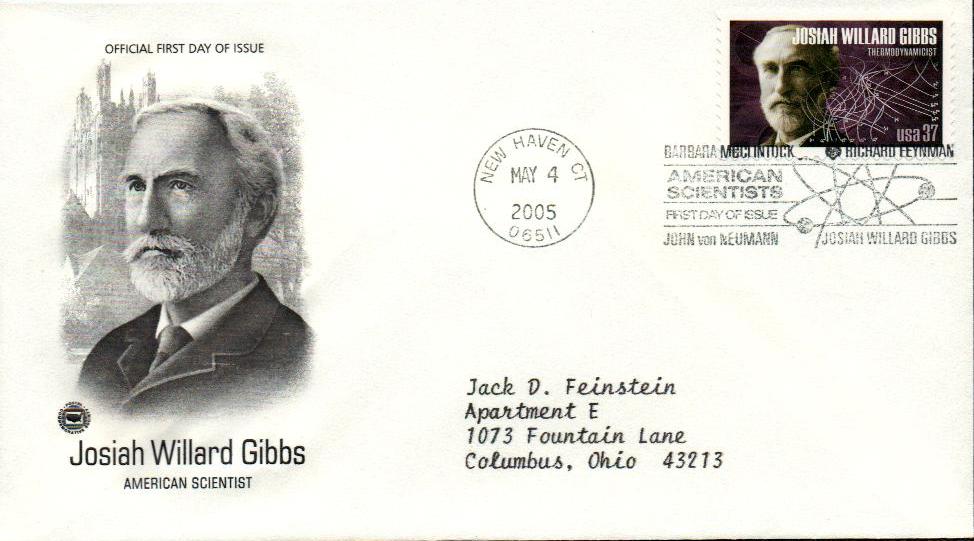
Except for a few early years abroad, Gibbs lived an uneventful, bachelor’s life in the house where he grew up. He was a gentle, considerate man, said to be “approachable and kind (if unintelligible) to students.” He died of an intestinal obstruction on April 28, 1903.
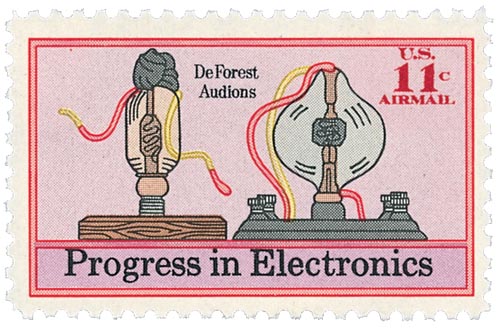
Since Gibbs died soon after the Nobel Prizes began, he never won that prize. However, he did receive some of the most prestigious awards of his era. Albert Einstein called Josiah Willard Gibbs “one of the most original and important creative minds in the field of science America has produced.”
Click here to read more about Gibbs’ life and scientific achievements.
37¢ Josiah Willard Gibbs
American Scientists
City: New Haven, CT
Printing Method: Lithographed
Color: Multicolored
Birth Of Josiah W. Gibbs
Gibbs’ father was a Yale professor who worked with the Africans of the Amistad Mutiny, translating their stories. Gibbs attended the Hopkins School before attending Yale College at the age of 15. While there he won prizes for excellence in mathematics and Latin. He graduated in 1858 near the top of his class.

Gibbs remained at Yale as a graduate student, during which time he was inducted into the Connecticut Academy of Arts and Sciences. In 1863 he received the first Doctorate of Philosophy (PhD) in engineering granted in the US (and the fifth PhD grant in any subject in the US). He earned this for his thesis “On the Form of the Teeth of Wheels in Spur Gearing,” in which he used geometry to study the best design for gears.

Gibbs went on to work as a tutor at Yale for three years, teaching Latin and later “natural philosophy” (physics). In 1866, he received a patent for his design of a railway brake. During this time he also proposed a new system of units of measurement in mechanics. Gibbs then spent a few years in Europe, attending lectures and meeting leading French and German scientists.
Gibbs returned to the US in 1869 and briefly taught French at Yale. Then in 1871, he was made the first professor of mathematical physics at Yale. For nine years he held that position with no pay, living on an inheritance. When another university offered a salary, Yale countered with its own offer. Gibbs stayed at Yale.

In 1873, Gibbs published his first paper, which was a geometric representation of thermodynamic qualities. In the age of steam, Gibbs formulated the laws of thermodynamics – the relationship between heat and other forms of energy. His rules had applications to chemistry, manufacturing, and engineering.
In the 1880s, Gibbs focused on vector calculus, particularly in regards to its use by physicists. He also wrote five papers on physical optics and coined the term statistical mechanics. Gibbs is credited with introducing the ideas of chemical potential and statistical ensemble.

Except for a few early years abroad, Gibbs lived an uneventful, bachelor’s life in the house where he grew up. He was a gentle, considerate man, said to be “approachable and kind (if unintelligible) to students.” He died of an intestinal obstruction on April 28, 1903.

Since Gibbs died soon after the Nobel Prizes began, he never won that prize. However, he did receive some of the most prestigious awards of his era. Albert Einstein called Josiah Willard Gibbs “one of the most original and important creative minds in the field of science America has produced.”
Click here to read more about Gibbs’ life and scientific achievements.







